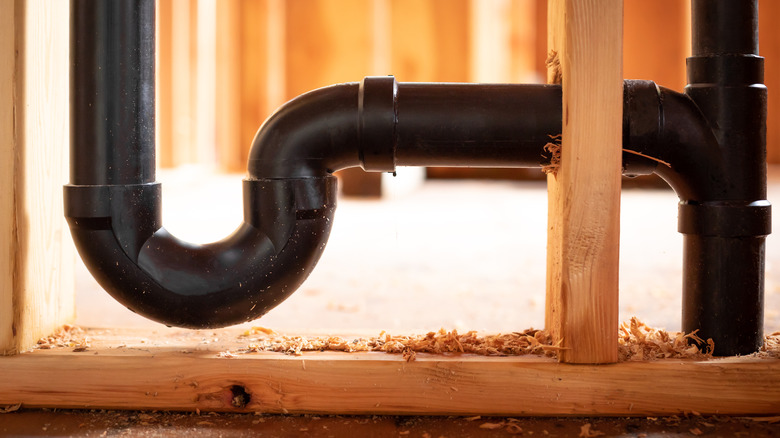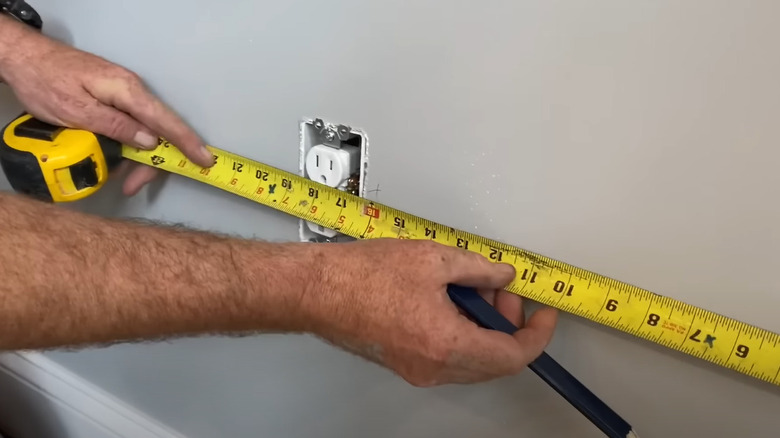Simple Tips To Find A Stud Without A Stud Finder
It's the question on everyone's lips: Can you find a stud without a stud finder? It's that moment when you've finally nabbed that eye-catching piece of art or put the finishing touches on a DIY project that promises to be the centerpiece of your room, only to hit a wall — quite literally — when it comes to mounting it. The realization dawns that the studs in your walls remain elusive. You weren't planning on buying a stud finder, too, and now, the prospect of puncturing your pristine walls with trial-and-error holes casts a shadow over your excitement. Fortunately, the art of locating studs without a stud finder is laden with simple, ingenious methods. The list ranges from the timeless technique of wall tapping, the sleuthing behind aligning with electrical boxes, to employing a magnet or flashlight.
Embarking on the quest to find a stud without making holes or using tools, one of the most traditional yet easiest methods is wall tapping. With only your fingertips or knuckles as tools, you can traverse the expanse of your walls, listening intently for acoustic feedback from the wall. An echoey hollow sound signifies the absence of studs, while a dull thud signals you've struck the structural gold of a stud. However, beware that this method is not foolproof, as various obstacles behind your wall could mimic the solidity of a stud, leading to false positives. Alternatively, use a hammer face covered with a cloth to prevent damaging your wall.
The magnet, flashlight, or smartphone trick
With its modesty, a magnet is another indispensable tool for finding studs without a stud finder. To do so, sail a rare-earth or neodymium disc magnet across the wall. When it exhibits an obstinate attraction to the wall, you've likely landed a screw holding a stud in place. Beware, however, of the pitfalls in this method. Your magnet might be smitten by random metal objects like pipes or ducts. Alternatively, rub two steel wool balls by your wall; the generated static charges cause steel filaments to cling to the stud location.
The flashlight method is like a theatrical play where you, armed with a bright flashlight, cast a strong beam at an obtuse angle against the wall. This illuminates the secrets of the wall, casting shadows or highlighting elusive indentations where sneaky nails or screws are nestled into the studs. Make sure to switch off the main lights in the room. However, a smooth wall texture and a glossy finish might make the detection a tricky puzzle.
Smartphones have transcended their role as communication devices. Through apps designed to leverage the magnetic sensor initially intended for compass functions, your smartphone transforms into a futuristic stud finder. As you move your device along the wall, the app's responses — be it auditory beeps or visual cues — alert you to metal objects hidden within, hinting at the possible presence of a stud. However, the app's radar might pick up deceptive metal signals from plumbing or wiring.
Of studs and switches, outlets, or tape measure
The next trick of locating a stud without a stud finder sees you tap into the construction world's not-so-secret code of stud placement. Begin your quest by measuring 16 inches from a corner of the room. The next step is grounded in the predictable, albeit not infallible, practice of spacing studs 16 inches apart, center to center. Keep marking 16-inch sections until you reach the approximate area when you want to use a stud. A word of caution here: This technique assumes standard construction practices, and the first stud from the corner might not be exactly 16 inches.
Next, focus on the more subtle signposts in your quest for finding a stud without a stud finder: electrical receptacles and switches. Switch off the mains, unscrew the cover of an outlet or switch, and gently probe through its edges with a thin nail. When you hit resistance, congratulations. But don't stop there! Measure 3 to 4 inches from the receptacle box's edge to pinpoint the stud's center.
However, when these cunning tactics fall short, and the stakes are high for the item you want to mount to conceal imperfections, it's time to unveil the more intrusive tool: the drill. Drill a hole, and the moment you feel an increase in resistance, you've struck a stud. Alternatively, let a finishing nail driven by a hammer be your guide. These approaches, though brash, are warranted under necessity when what you hang masks the damages inflicted.


